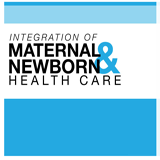
Meeting Goal and Objectives
The overall goal of the meeting was to increase collaboration between the maternal and newborn health communities in order to improve the quality of maternal, fetal, and neonatal health care (see Appendix B for meeting agenda).
To achieve this goal, the meeting had the following objectives:
- Review knowledge base on the state of the evidence regarding integration of maternal and newborn health care and the promising approaches, models, and tools that exist for moving this agenda forward
- Identify the barriers to and opportunities for integrating maternal and newborn care across the continuum
- Develop a list of actions the global maternal and newborn health communities can take to ensure greater programmatic coherence and effectiveness
Summary of Major Themes
The following issues emerged as major themes over the course of the two days.
- Integration is a means to an end. It is not a goal or outcome in and of itself, nor will it inherently improve any program. Rather, integration should be viewed as an approach to improving quality of care, provider and user satisfaction, and health outcomes by prioritizing the needs and desires of mothers, newborns, and providers first and foremost. Not all care could or should be integrated.
- Language matters. In the quest to effectively organize health care, artificial divides have been created between maternal, fetal, and newborn health at the global, national, and service delivery levels. The effective integration of maternal and newborn health care can be furthered with clear and consistent usage of the term “integration” to capture the aspiration for high-quality, equitable care. New language is needed that unites, rather than divides, the maternal and newborn health communities.
- Understanding context is critical. Evidence and experience suggest that successfully integrated, high-quality care is planned, delivered, and evaluated with the needs of mothers, newborns, providers, and families at the center and with the contextual barriers and opportunities for providing care in mind. While successful and unsuccessful examples provide excellent learning opportunities, a program or care delivery platform that is accessible, affordable, acceptable, and of high quality in one context may not be so in another. A strategic focus on the underlying theory of change and the constraining and facilitating factors contributing to outcomes is key to working effectively in a given setting.
- Cost dimensions cut both ways. The maternal and newborn health communities must consider the financial and budgetary dimension of integration, including the cost implications for client themselves in addition to health system costs. Some examples were shared where avoiding unnecessary duplication of care could cut costs, and other examples noted that the cost implications associated with changing an existing care delivery system can be immense.
- In designing integrated programs, there is a need to be opportunistic and tactical. Systems and processes must be designed to integrate care across space and time and at point of delivery, rather than requiring one provider to be responsible for all care at once.
- The maternal and newborn communities need to plan strategies around established platforms, rather than use resources to build new ones. At the global level, the post-2015 Sustainable Development Goals, Ending Preventable Maternal Mortality, Every Newborn Action Plan, Every Mother Every Newborn, and global funding mechanisms, such as Saving Mothers, Giving Life, all provide powerful platforms to further the integration agenda. At the country level, technical working groups, professional associations, and policymaking processes also provide established platforms. There are a host of service delivery-level opportunities to be leveraged, including facility-based quality improvement teams, community health workers, and mechanisms for community-facility communication.
- Leaders in the maternal and newborn communities must act as advocates in complex political processes. It is vital that they understand the complexity of the power structure, professional interests, and “territory” in which they are working. To achieve coordinated planning, delivery, and evaluation of maternal and newborn health care, concerted advocacy and behavior change communication are needed to explain the benefits of integrated care as well as the missed opportunities for improving quality that are created by disintegrated care.
- The maternal and newborn health communities need to “walk the talk.” Participants agreed that we all need to demonstrate the benefits of integrated care so that there is a clear evidence base and ready models showing how shared priorities between the maternal and newborn health communities, including improving the quality of care provided to mothers and newborns, can be seized.
Conclusion
There was widespread agreement among the participants that now is the time to dig into the universe of opportunities that integration offers to improve health outcomes for mothers and newborns. At the same time, some voices cautioned that much needs to be done in terms of implementation science to know how best to integrate programs and policies and that mindsets need to shift among all of us—from donors and researchers to program implementers and policymakers—in order to consider the role and benefits of integration, understand when it makes sense to integrate care, and how best to do so. To move the integration agenda forward in concrete and practical terms, meeting participants created a list of recommended actions (see Appendix A).